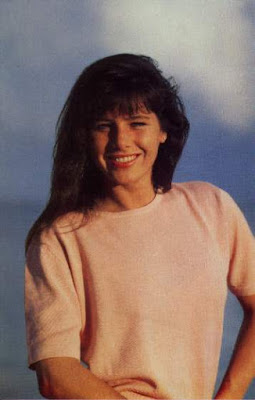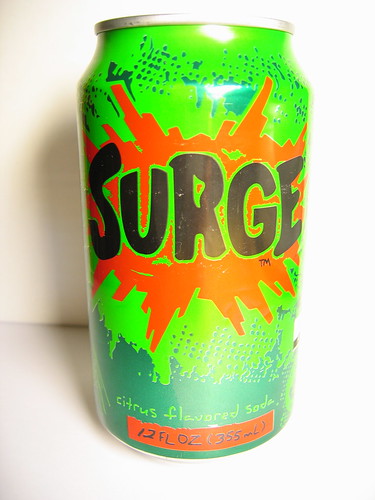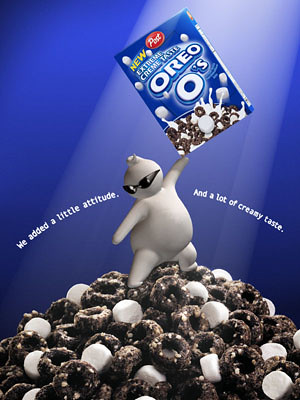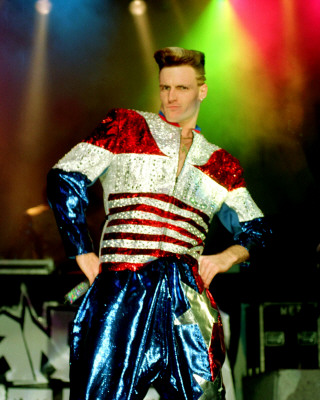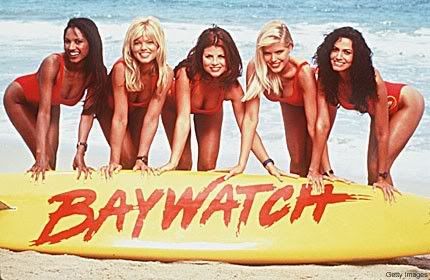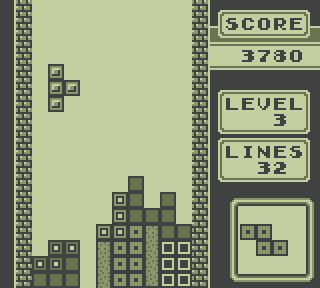
I don't know about you, but I prefer for my bubble gum supply to measure in feet. Sticks are for lightweights. Everyone knows that the true test of childhood victory is the ability to fit the maximum allowable denomination of chewing gum into your mouth and to successfully masticate without asphyxiating. But packages of gum are so difficult to unwrap, not to mention all that unsightly tinfoil waste. Sure, it can be fun for awhile to peel off the foil and stick it on your school notebooks, but what are you left with after that? I demand more from my gum.
Luckily, my concern did not go unaddressed. The Wrigley corporation not only recognized this gum supply issue, but also chose to capitalize it with a hefty marketing campaign directed as gum-crazed children. They recognized that kids prefer novelty products to everyday fare and went about tailoring a product to meet this need. They sat around the boardroom wondering, "Now how can we make a completely useless product for which we can utilize cold, calculated marketing strategies to convince children that they thought of it in the first place?"
The major thrust of many advertising campaigns directed at children in the 90s focused on the illustrious nature of adult disapproval. In some crazy existential marketing bubble, it was completely justifiable for a group of grown-ups to labor over advertising that outright villianized adults. Somehow, they managed to convince us as children that this was all some crazy idea that we had come up with. Never mind that the concept, promotion, production, and distribution of the product was completely controlled by adults. This was of little matter to the Wrigley people. The real bottom line was that children believed that this product in some way represented their lifestyle and needs while being generally repugnant to authority figures.
Adults likely frowned on Bubble Tape with good reason. A few sticks of gum to satiate a sugar-demanding child is one thing, but a full six feet of bubble gum is probably overkill. "Oh, you wanted some gum? Well, how about twice your height's worth? Now stick it in your mouth all at once and try your best not to die. Doesn't that sound fun?"
Bubble Tape was aptly named for its scotch tape-like dispenser. Who says office supplies can't be inspiration for food products? Alright, I've been known to say that from time to time, but can you blame me? It's pretty outrageous. This packaging allowed for easy access to a maximal amount of chewing gum, even possessing the capability to discard the dispenser entirely in favor of sticking the whole roll directly in your mouth.

Sometimes as an adult, when I try to eat a particularly unwieldy large piece of sushi in a single bite, I am eerily transported back to the chew-or-die memory of attempting to ingest a full six feet of Bubble Tape. The trauma has faded, but the awareness lurks just beneath the surface. My mother had told me (incorrectly, I should note) that swallowed gum would stick to my appendix, and I thus worried for years needlessly about my inexorable pending appendectomy. I can only begin to imagine what the fictitious surgeons would say. Come along, if you will, on a journey into my Bubble Tape-induced nightmare:
Surgeon One: Holy cow, Bill get a load of this!
Surgeon Two: Geez, what is that? A pancreas? Actually, on second glance it looks a little spleenish. Shouldn't we leave this in?
Surgeon One: Well, actually, I think it's...gum. Chewing gum. Enormous six-foot squared chunks of it.
Suregon Two: Gosh, Tim, she probably should have listened to her mother when she made up that ludicrous lie, then she easily could have avoided this imaginary appendectomy.
But why the urge to stuff all this gum into our mouths and masticate our way into all sorts of improbably dangerous medical scenarios? In all likelihood the commercials egged us on just a bit:
Ah, yes. For you, not them. Touche, ad execs. Touche.
You have to appreciate their understanding of the literal-mindedness of children through the illustration of 6 feet as actual human feet. On the whole, this advertisement makes very little sense. I accept that children-directed marketing doesn't necessarily have to make sense, but this truly is on the side of the extreme. Essentially, here's a random cluster of facts about our unsightly underoo-ironing gym teacher and equally unattractive ice cream-scooping mashed potatoes cafeteria lady. Sure, we understand that these are unsavory characters with undesirable behavioral attributes., but is their lack of endorsement really enough to prompt children to flood grocery stores en mass in search of lengthy chewing gum?
Apparently it was. There was some underlying childlike joy to be taken from the whole "For you, not them" concept. An adult requested a piece and you could flippantly say, "But, mother, haven't you seen the commercials? This gum is not intended for grown-ups. This is a product entirely intended for me." Of course, I'm sure our parents just loved these tidbits of commercial-learned wisdom. In fact, I suspect it was exactly this type of behavior that prompted my mother to concoct the gum-to-appendix lie in the first place: to regain control of the bubble gum situation by unfair use of fearmongering.
The real trouble arises now, as the "you" in these commercials are now all grown up. Actually, it's possible some of you are out their ironing your underwear right now. Do we still reserve this ad-given right to deny others the sweet six feet of confectionery goodness? Obviously this "for you, not them" argument was built on faulty logic; like it not, now we're them.
Regardless of this hole in the Bubble Tape reasoning, I say embrace your inner child. Go out there and buy spools of gum by the foot and remember a time in your life when this 99 cent piece of plastic meant the world to you. Just don't say I didn't warn you about the risk of imaginary appendectomies.











